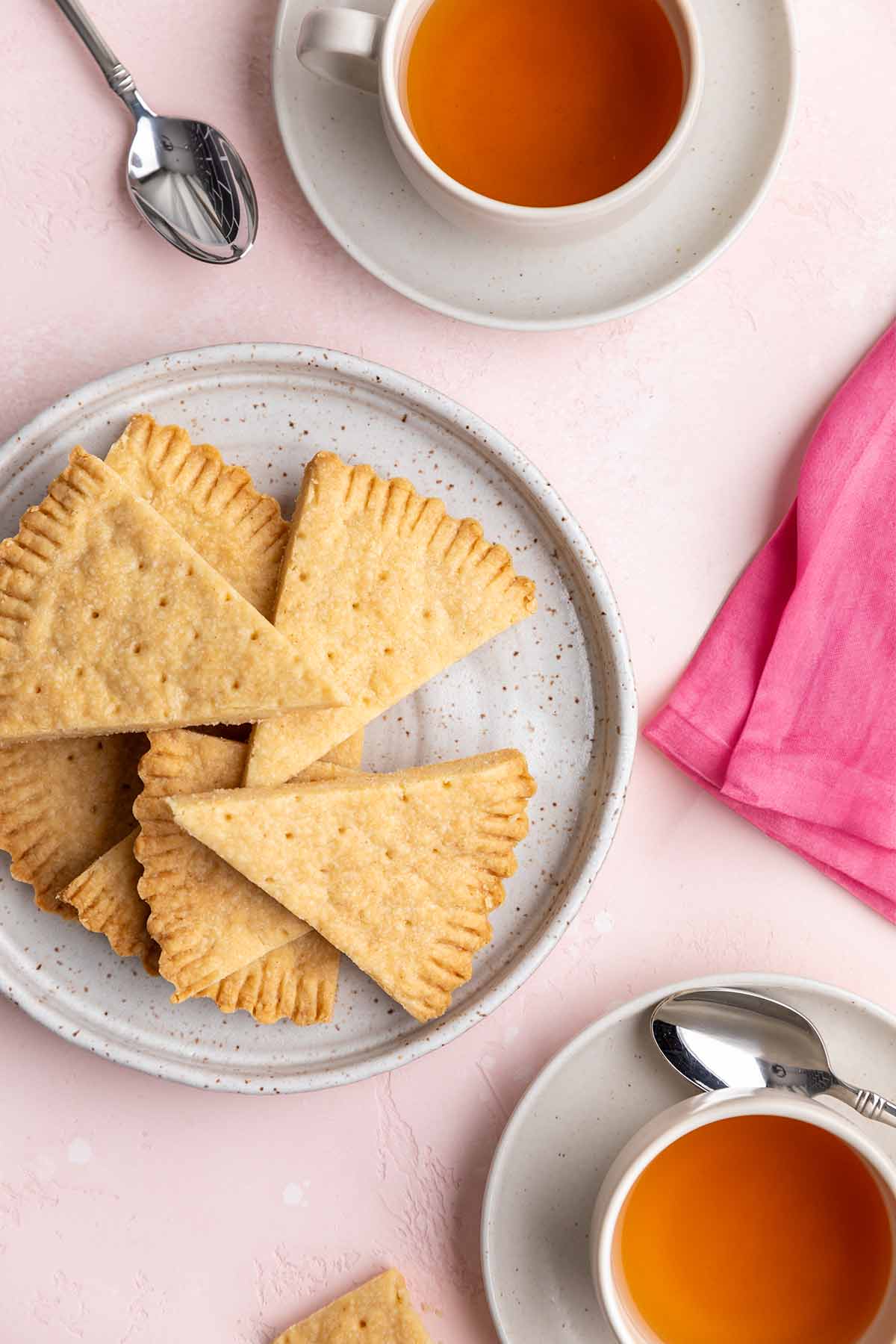
You’ll find the crumbly, melt-in-your-mouth texture and buttery flavor of Scottish shortbread biscuits unmatched, which is why they have been popular for centuries. There’s no reason for anything this delectable to ever go out of style. It’s a classic five ingredient recipe, and for good reason.
My Quest for the Perfect Scottish Shortbread

When The One and I spent several weeks in Scotland–the Highlands (above), Glasgow, and Edinburgh (below)–Scottish shortbread was on our hit list. We wanted to understand what made the best shortbread and why it’s so beloved. (One bite solved the beloved question!)
We spoke to professional and home bakers, customers, and tea shop owners. We had afternoon tea at the Tea Rooms At Edinburgh Castle and frequented Pinnies & Poppy Seeds, which sadly is now closed. We ordered it everywhere.

We left no biscuit unturned. We discovered that many shortbread recipes go off the rails by adding herbs and spices, nuts, dried fruit, and vanilla, calling for them to be dipped in chocolate. You get the idea. All of those are delicious variations, but according to the Scottish bakers we talked to, they’re not the true, classic Scottish shortbread.
With that in mind, back home, I researched for quite some time looking for ratios of flour to butter to sugar, American shortbread versus Scottish shortbread, types of sugar, etc. The diversity (and lack of agreement) is staggering. Rose Levy Beranbaum, as always, had some fine things to add to the technique of making shortbread. (The baggie idea is her, and it’s brilliant.)
But it seemed to always come down to two things: utter simplicity and the quality of the ingredients.
What You’ll Need to Make This
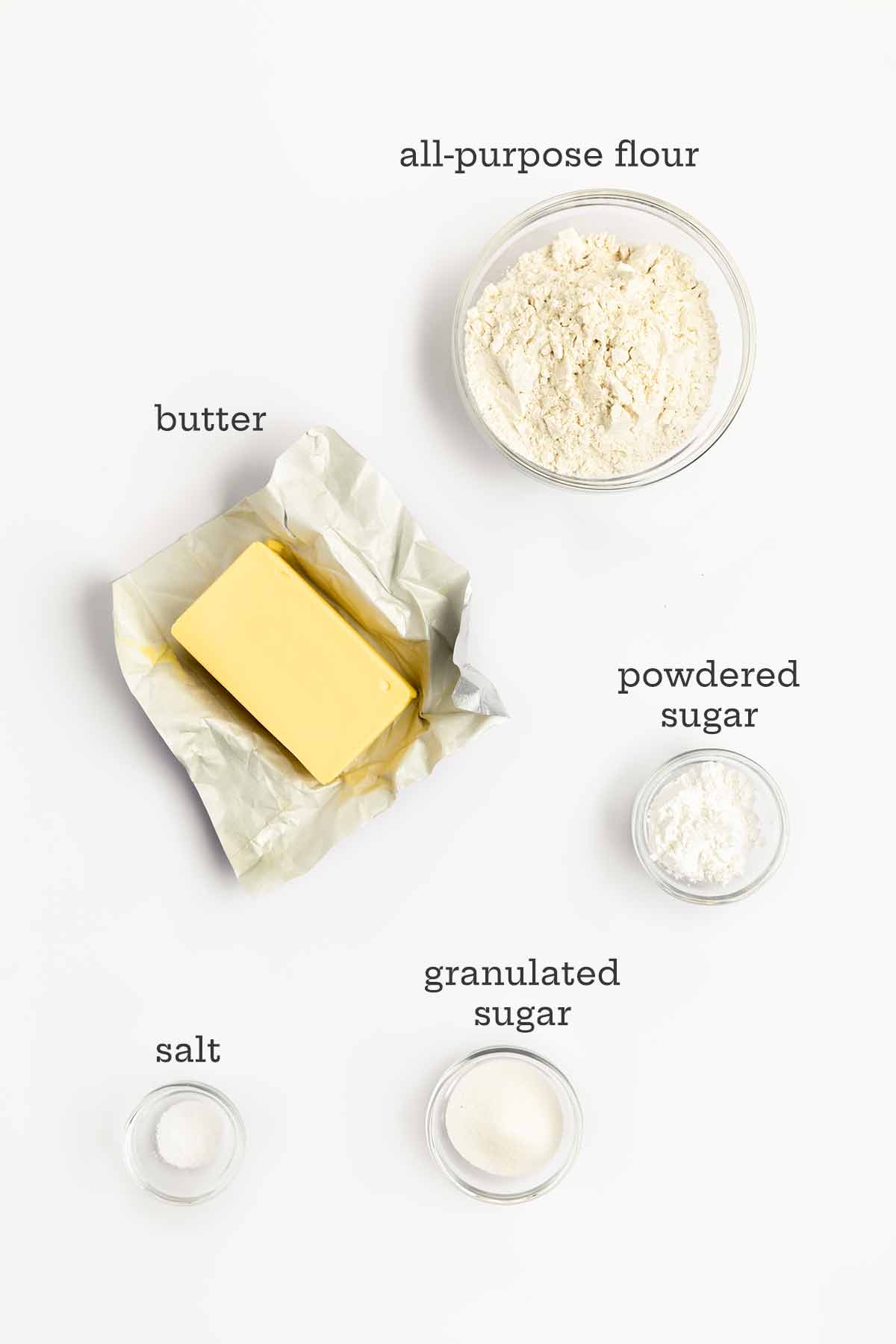
- Butter–The flavor of these traditional shortbread cookies is entirely dependent on the butter that you use, so I recommend splurging on the best you can afford. (You’ll thank me.) My favorites are Irish Kerrygold, French Échiré and Payson Breton, European-style Plugrà, and Vermont Creamery.
- Sugar–A combination of granulated sugar and powdered sugar gives these cookies just enough sweetness, while the cornstarch in the confectioner’s sugar contributes to that melt-in-your-mouth texture shortbread is famous for.
How to Make This Recipe
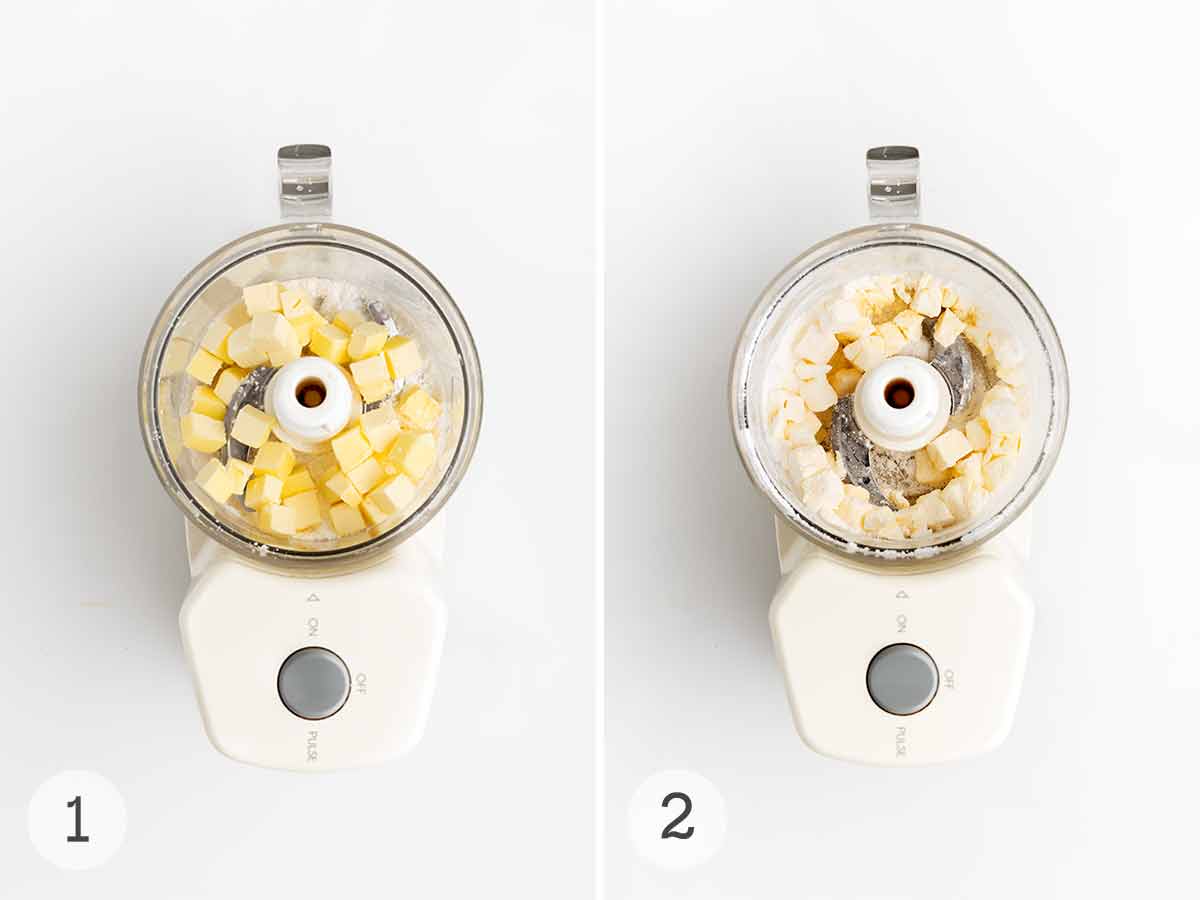
- Blitz the sugars and butter in a food processor to coat the butter.
- Dump in the flour and salt.
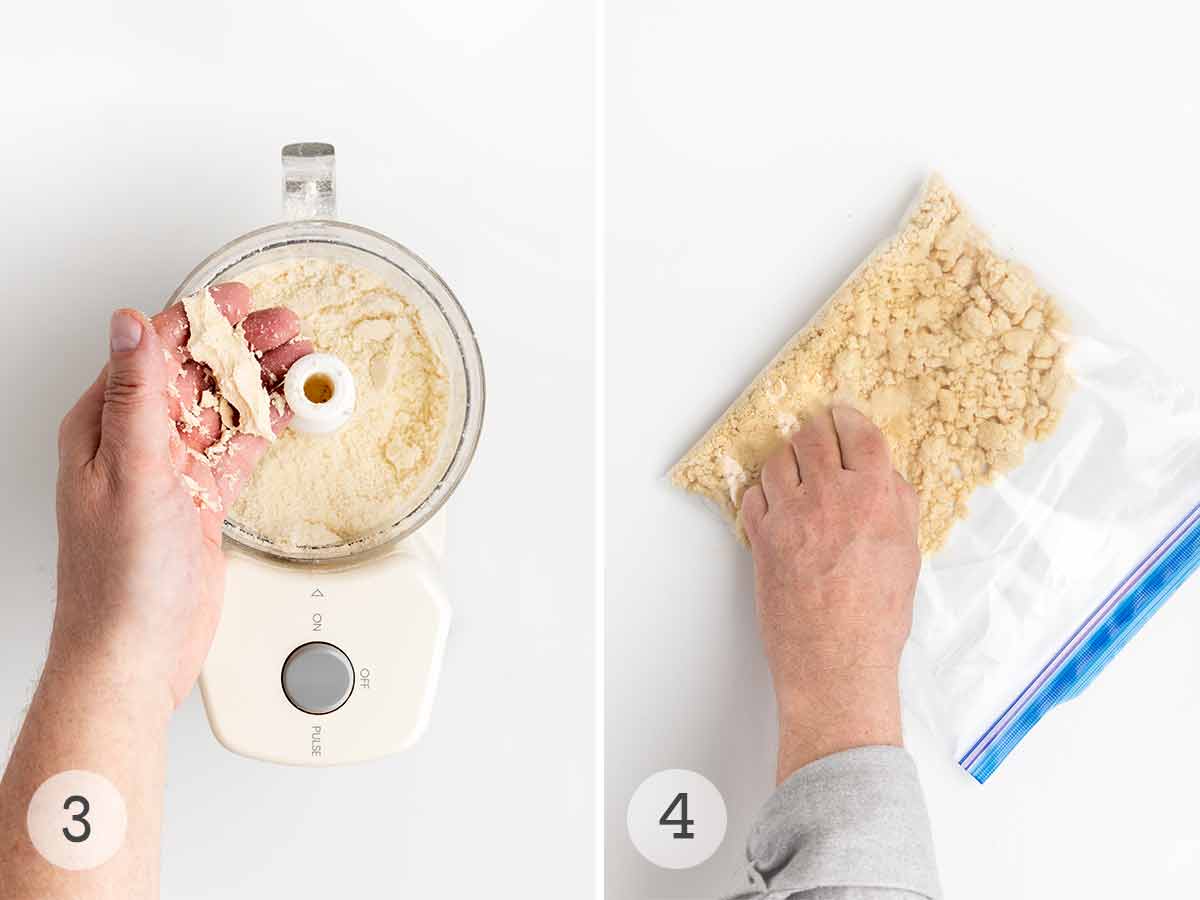
- Pulse until the dough is uniform and holds together when pinched.
- Scrape the dough into a plastic bag and knead with your hands until it comes together.
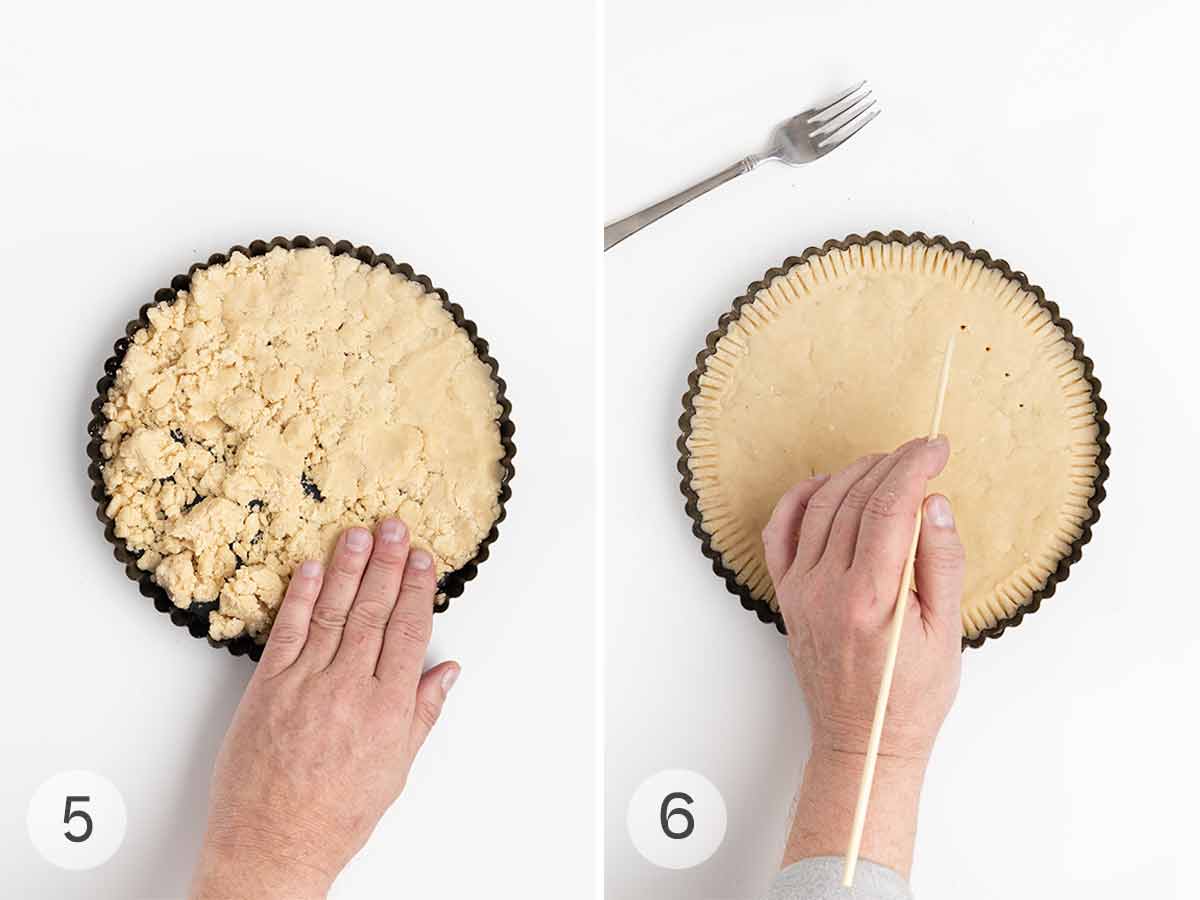
- Press the dough into a removable-bottom 9-inch tart pan.
- Use the tines of a fork to create crimped edges and poke all over with a skewer or toothpick.

- Cut the shortbread into 8 triangles and chill for at least 30 minutes.
- Bake in a 300°F oven until lightly golden, then score the shortbread again and let it cool completely.
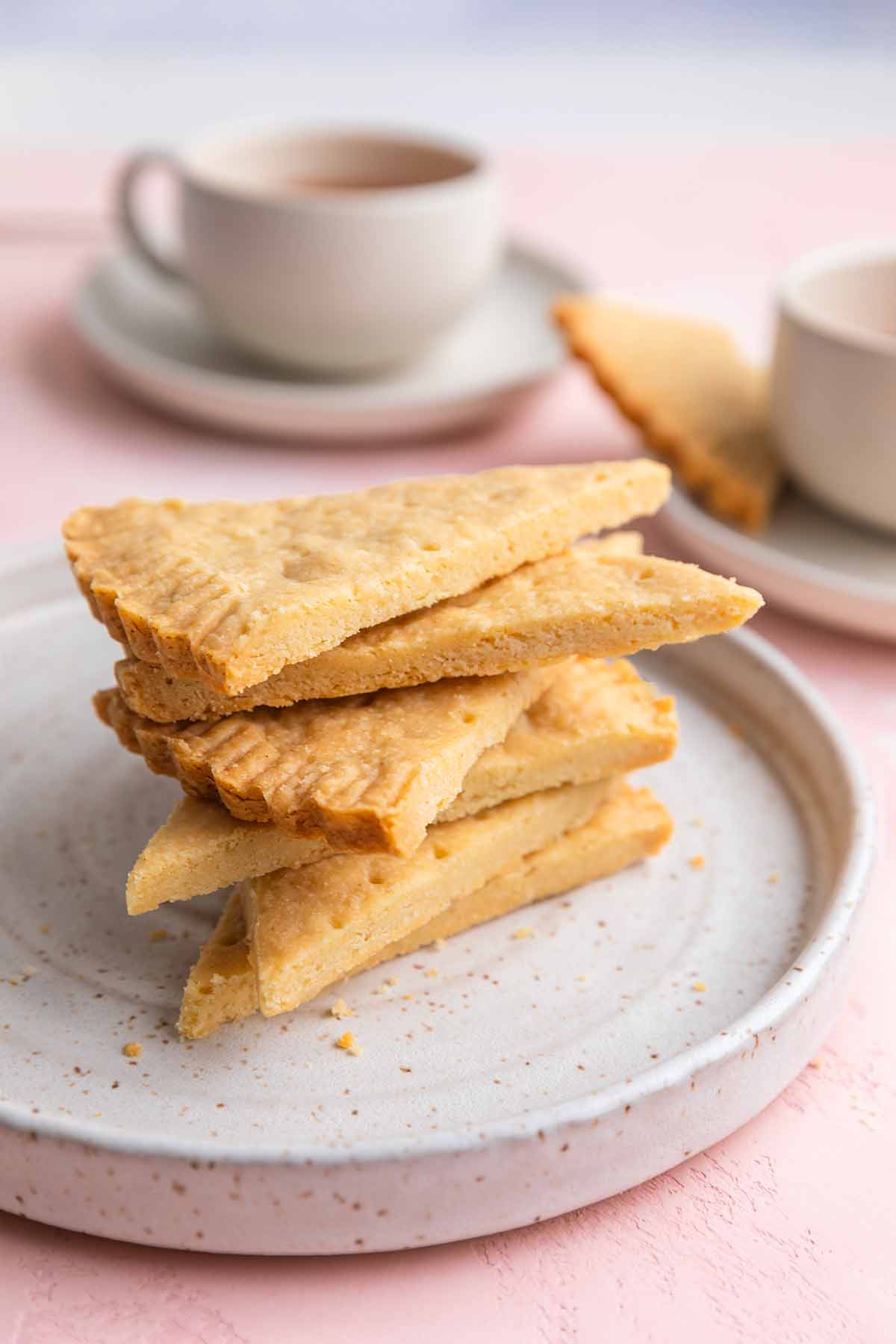
Common Questions
A tart pan with a removable bottom will give you the cleanest, prettiest edges, but you can also use a 9-inch round cake pan. Press the dough into a parchment-lined cake pan coated with baking spray and score into 8 wedges. Bake the cookies, and when cool, carefully invert them onto a rack.
Alternatively, you can line an 8-by-8-inch square baking pan with parchment and press the dough into it. Score the dough into sixteen 4-by-1-inch or eight 4-by-2-inch fingers and bake as usual.
Sure can. After the shortbread has cooled completely, store it in an airtight container in the freezer for up to 3 months.
Traditional shortbread is cut into wedges or rectangular biscuits, and I recommend that you stick to these shapes. The delicate texture of the dough will make it difficult to cut using intricate cookie cutters.
While there’s a lot of disagreement here, the most significant difference is that the Scottish version doesn’t call for leavening, such as baking powder or baking soda, resulting in a crumbly rather than a crispy biscuit. It also tends to be less sweet than other types of shortbread.
The dough contains a lot of butter, which will melt and release water as steam while it bakes. Poking holes in the dough allows the steam to escape without causing the dough to bubble up so that you end up with flat evenly-shaped cookies. It also helps the shortbread to cook more evenly.

Why Our Testers Loved This
Tester Terry S. calls these cookies “buttery and seductive.” If that doesn’t send you running for the kitchen, I don’t know what will.
Helpful Tips
- If you’d prefer to make rectangular shortbread biscuits, press the dough into an 8-inch square cake pan and score it into sixteen 4-by-1-inch or eight 4-by-2-inch biscuits.
- The shortbread will firm up a bit as it cools. It’ll be very nigh unto impossible not to dive in and try it right away, but letting it cool completely will give you a cookie that doesn’t crumble when you eat it.
- Store the cookies in an airtight container at room temperature for up to 5 days. But I must admit, they’re best the first few days after baking.

Write a Review
If you make this recipe, or any dish on LC, consider leaving a review, a star rating, and your best photo in the comments below. I love hearing from you.–David

Scottish Shortbread
Equipment
- 9 1/2-inch (24-cm) non-stick round tart pan with removable bottom
Ingredients
- Baking spray
- 2 tablespoons granulated sugar
- 3 tablespoons powdered sugar
- 1 1/2 sticks (6 oz) cold unsalted butter, cut into 1/2-inch cubes
- 1 1/2 cups all-purpose flour
- Large pinch Kosher salt
Instructions
- Lightly coat a 9 1/2-inch removable-bottom tart pan with baking spray.
- Dump the sugars and butter into a food processor and pulse a few times to coat the butter and cut down the sugar.
- Scoop in the flour and salt and process until the dough turns powdery and begins to clump lightly.
- Dump the dough into a plastic bag and knead it until it forms large clumps.
- Turn out the dough into the pan and press it into an even layer with your fingers.
☞ TESTER TIP: To make a beautifully flat top, press another bottom of a tart pan (or a pie plate) into the dough.
- Press the tines of a fork into the edge of the pan to make a delicate ridged rim. Poke the shortbread all over with a skewer or toothpick. With a bench scraper or sharp knife, cut the dough into 8 triangles.
- Wrap the pan with plastic and chill for at least 30 minutes.
- Crank the oven to 300°F (150°C).
- Bake the shortbread until the top is lightly golden, 40 to 50 minutes.
- Transfer the tart pan to a rack and immediately re-cut along the lines again which will have closed up. Let the shortbread cool completely in the pan.
- Remove the tart ring and gingerly pile the wedges onto a plate. Devour, devour, devour.
Notes
- Change the shape–If you’d prefer to make rectangular shortbread biscuits, press the dough into an 8-inch square cake pan and score it into sixteen 4-by-1-inch or eight 4-by-2-inch biscuits.
- Let it cool–The shortbread will firm up a bit as it cools. It’ll be very tempting to dive in and devour these right away, but letting them cool completely will give you a cookie that doesn’t crumble when you eat it.
- Storage–The shortbread can be stored in an airtight container at room temperature for up to 5 days or frozen for up to 3 months.

An LC Original
View More Original RecipesNutrition
Nutrition information is automatically calculated, so should only be used as an approximation.
Recipe Testers’ Reviews
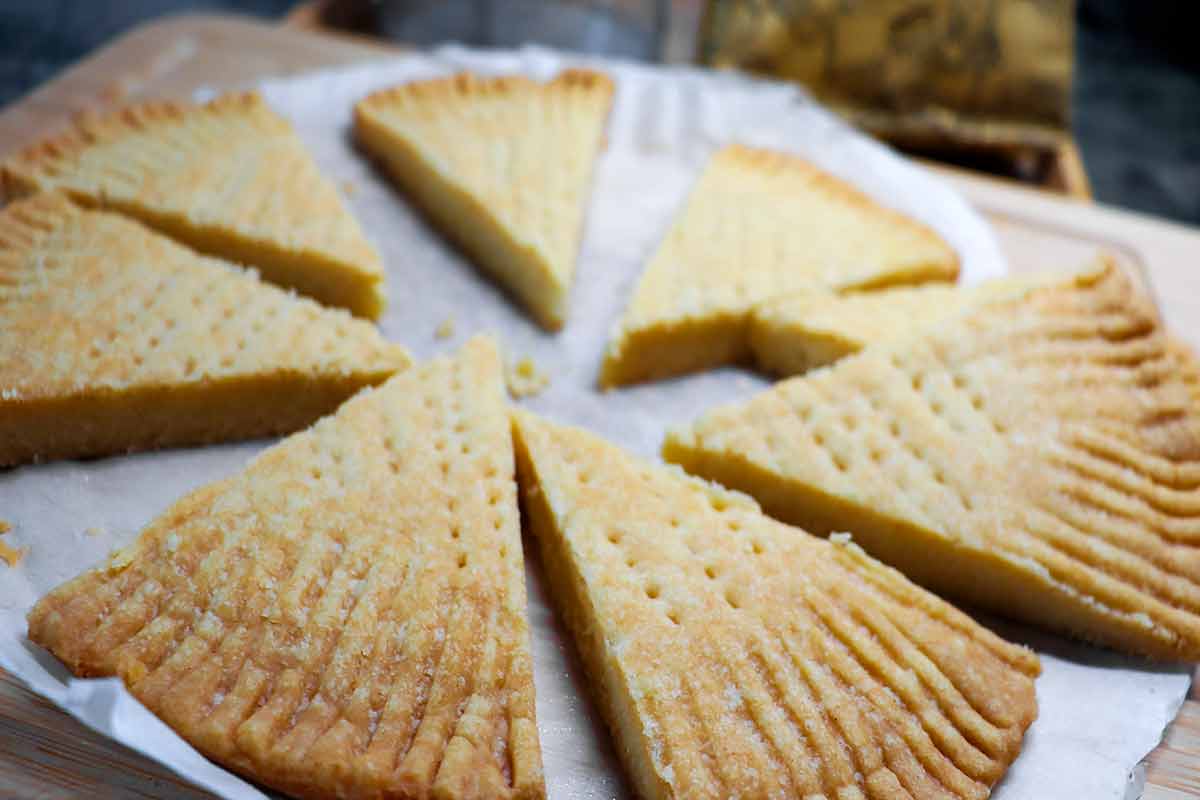
These are my favorite Scottish shortbread cookies! Crispy, firm, buttery, they melt in your mouth and are addictive.
The preparation is quite simple. However, keep in mind that the butter must be very cold when added to the other ingredients. This dough can be prepared in advance and stored in the cold, so we can always have these delicious biscuits ready to cook.
This Scottish shortbread recipe is the cookie equivalent of a snowflake. Light, delicate, and dissolves magically on the tongue. I have several go-to shortbread recipes in my files, but this new version may replace them.
The cookies are buttery and seductive. I could easily eat the entire batch and not share it with anyone. Fortunately, my better angels prevailed, and I did let my husband have a cookie. He loved it!
Crumbly, buttery, traditional Scottish shortbread. It’s a simple recipe, but delicious and well worth taking the time to make. Everything you need to make it is probably in your kitchen right now.
Because the butter is a major component of the flavor, I recommend using a good butter you enjoy!
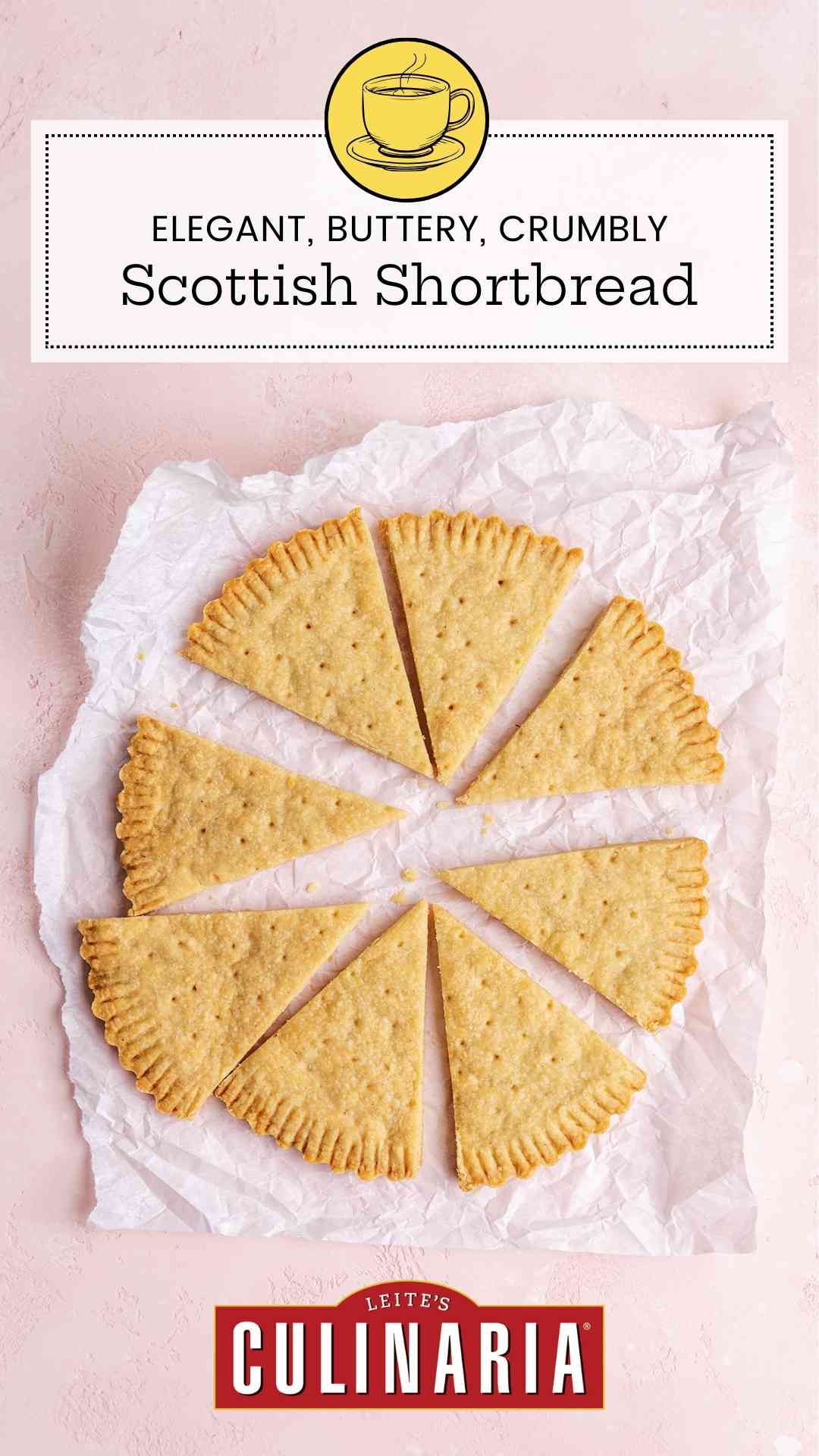
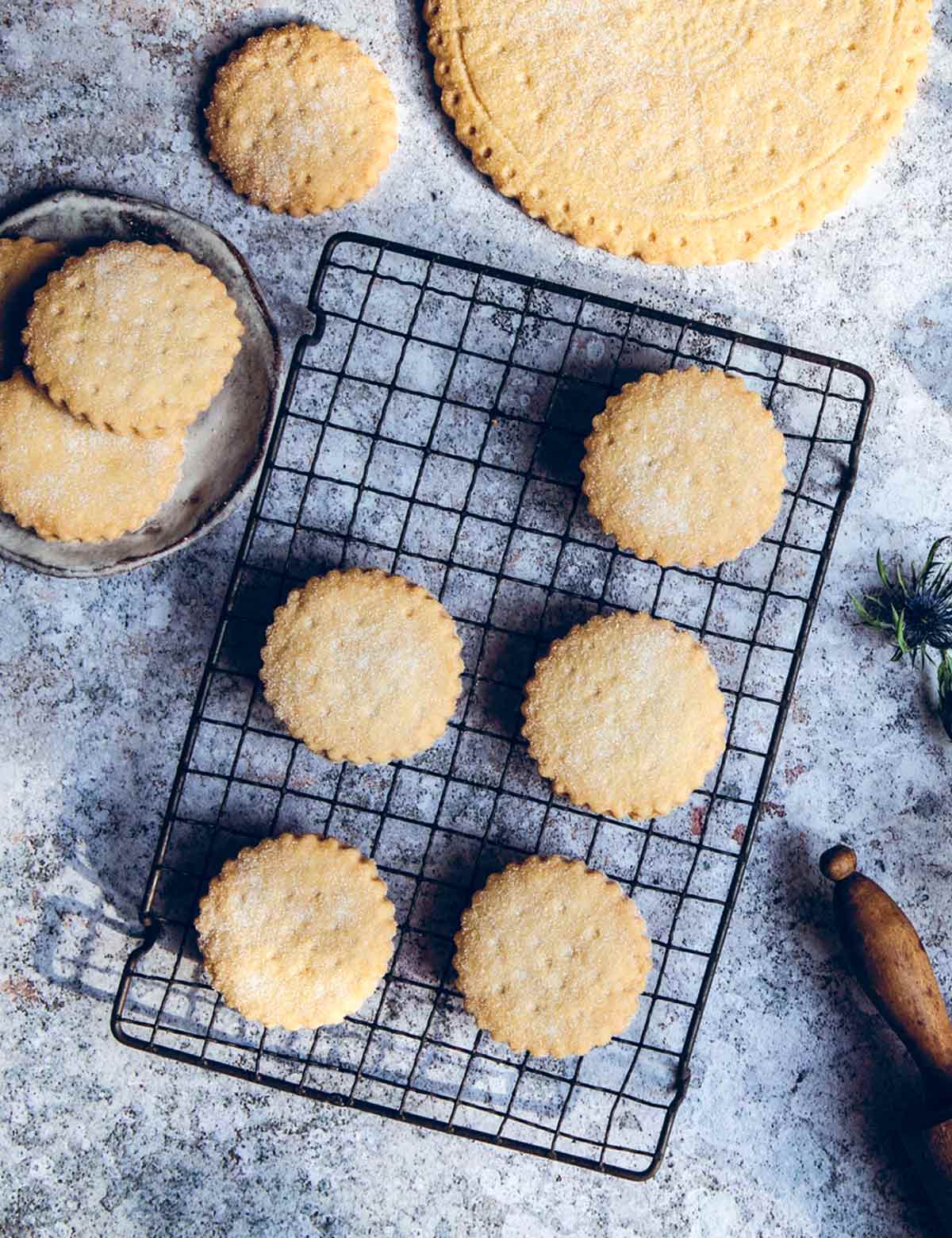
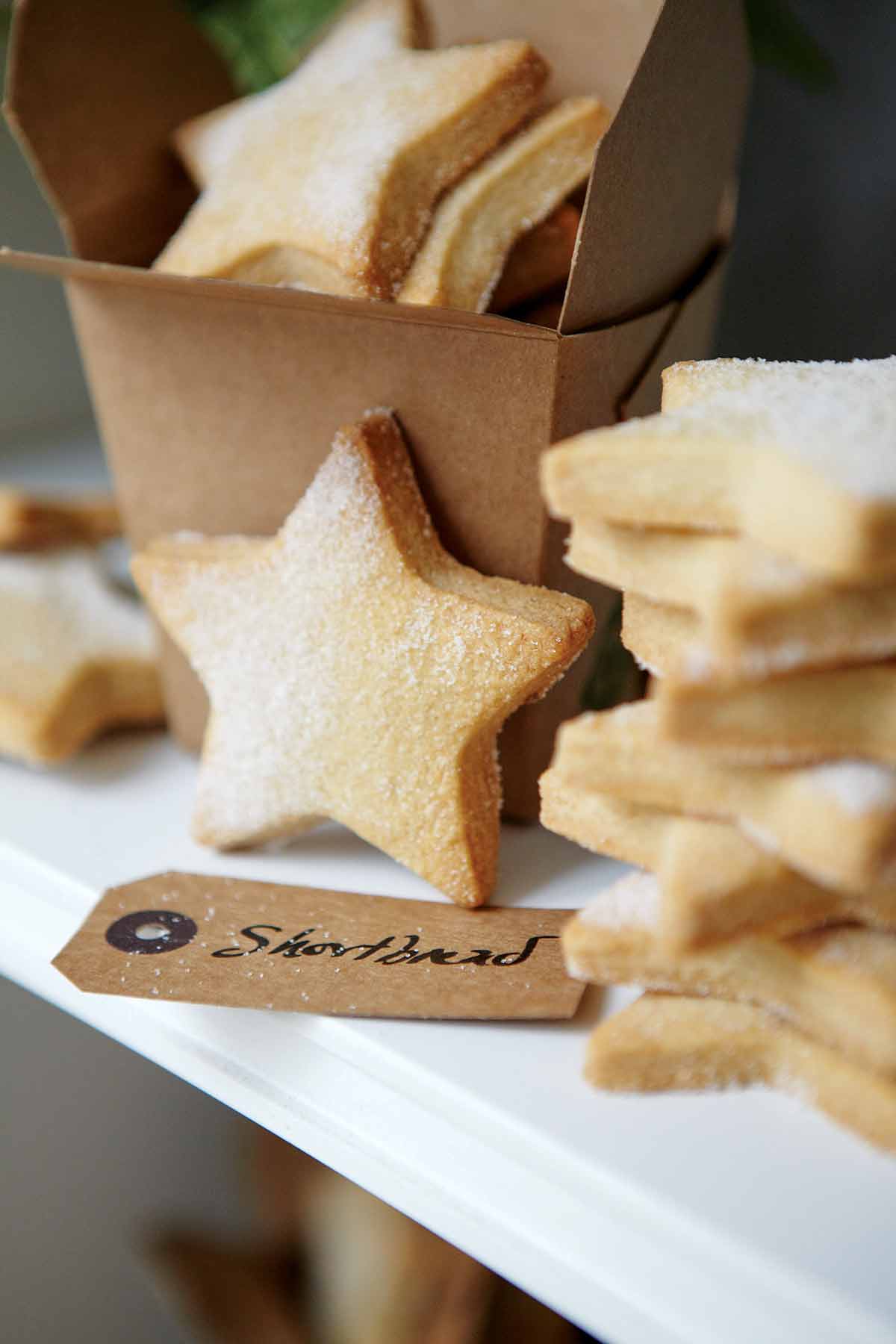


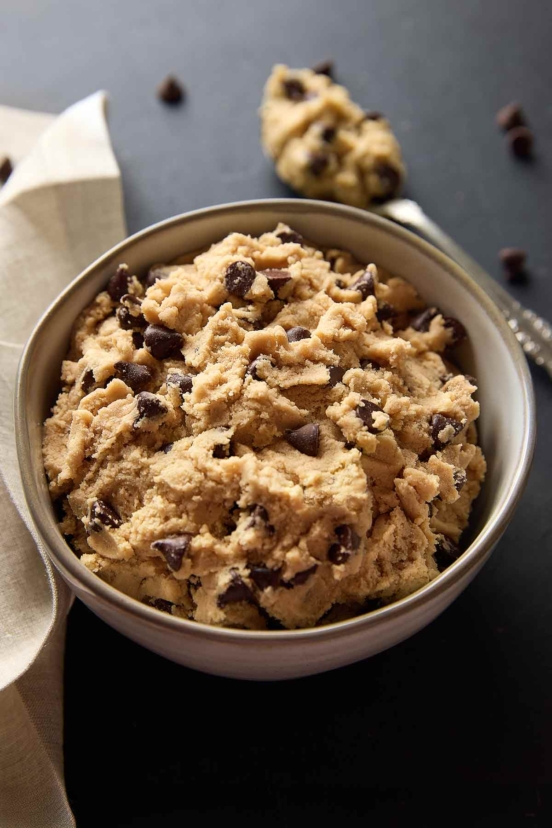
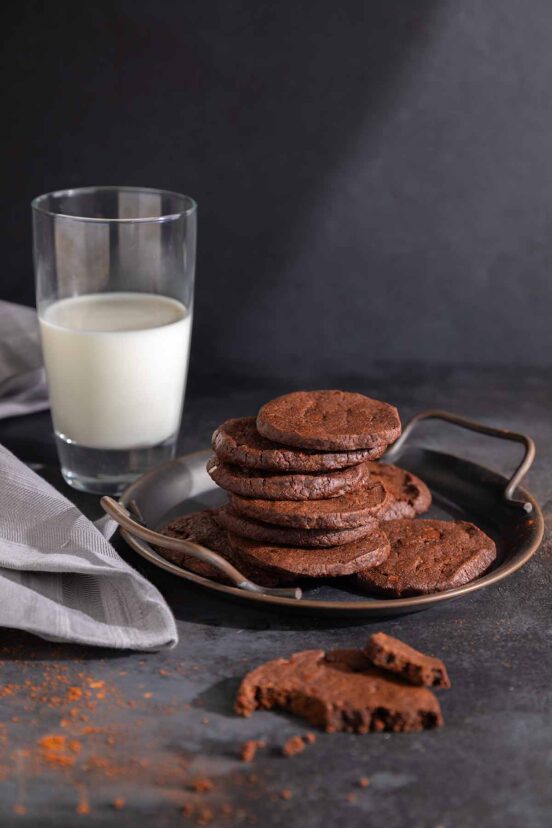
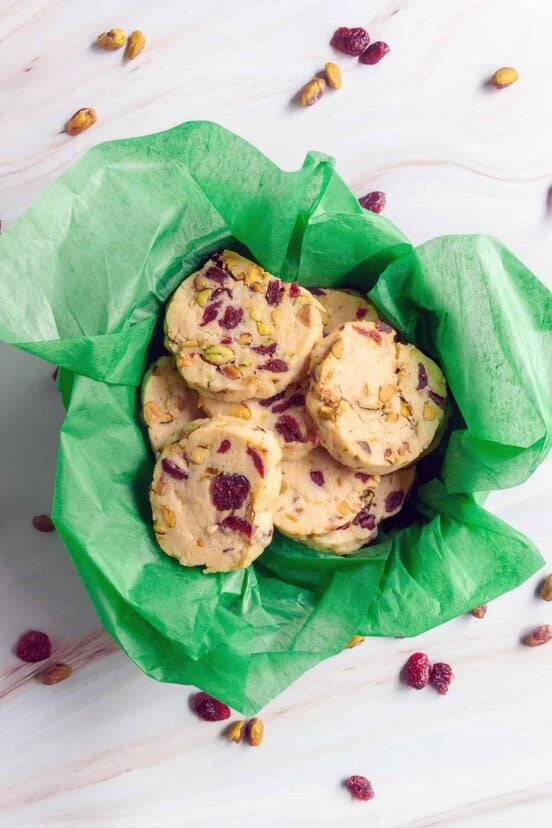









Usually, the sugar in grams about 1/2 the butter, but this seems to be about 1/4 that amount which, in turn, throws off the amount of flour. I’m new to the world of shortbread, so am I missing something?
Anette, you are correct that this particular recipe doesn’t follow the typical 1:2:3 ratio of sugar to butter to flour. The flavor of it is definitely less sweet than other shortbreads that you may have tried, and although we originally tried making it with less butter, we found that the dough was just too crumbly to work with.
Not sure what went wrong with my first batch? Just wasn’t holding together at all. When it was baked, it looked anemic. I don’t want to post the first batch pic…not the least appetizing. No pic of the second, either, but trust me it was beautiful.
We had friends over for lunch, and they’re from Scotland! I had them test my seconf batch..the result was 5 stars. Just the right crumble (almost none) & baked to a beautiful slight golden color. A gave them the remainder (of that batch) and they left with big smiles on their faces! I’ve known them for what’s seems like forever, and they would absolutely tell me the truth if they weren’t delicious and authentic tasting. Ok…one of them did say his grandmom made a wicked shortbread and was not to be reckoned with. I’ll leave it alone. ☺️
The buttery richness and subtle sweetness will pair well with hot tea/chocolate.
Deb, I’m so glad you persevered and made a second batch. Most likely you didn’t lean on the food processor button long enough. The reason why I prefer using cold butter is because it creates a more delicate shortbread. But it does need to be cut into the flour more than room-temperature butter. And I’m relieved your Scottish friends gave it a thumbs up!